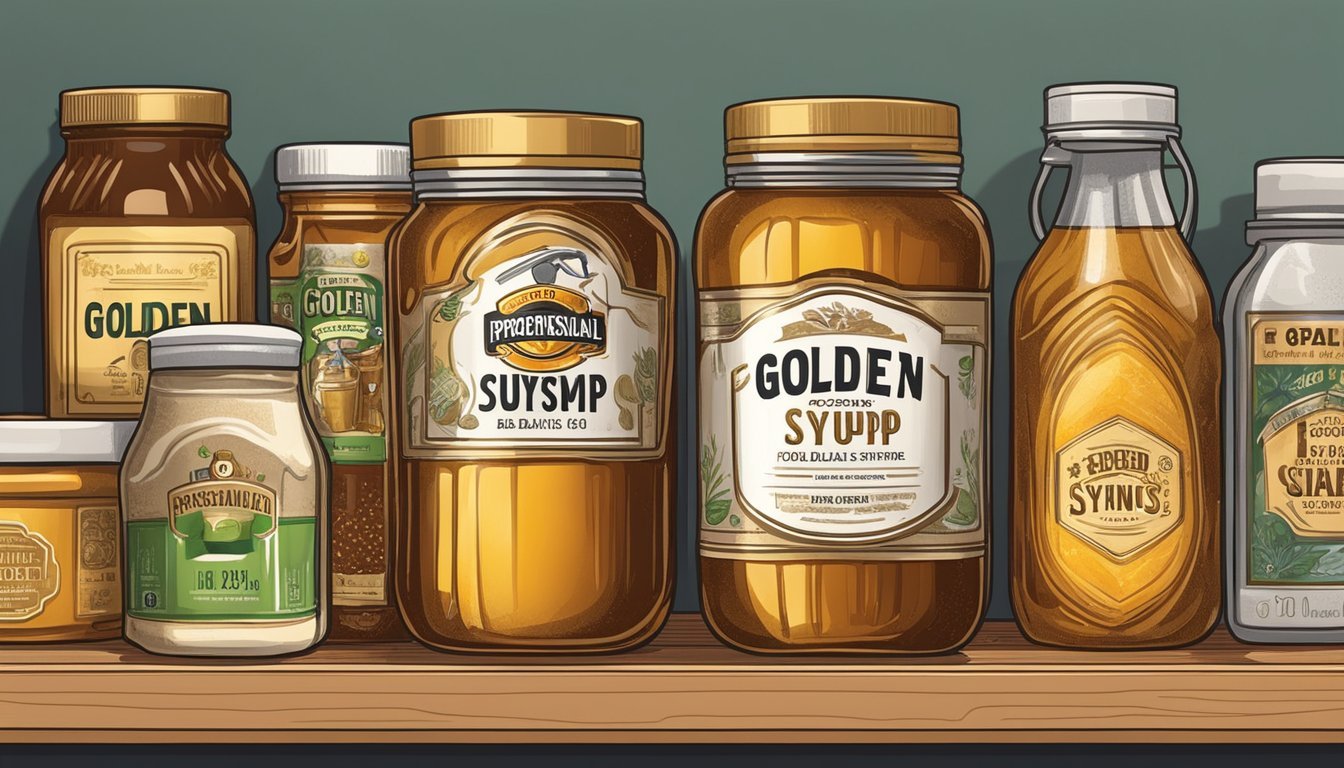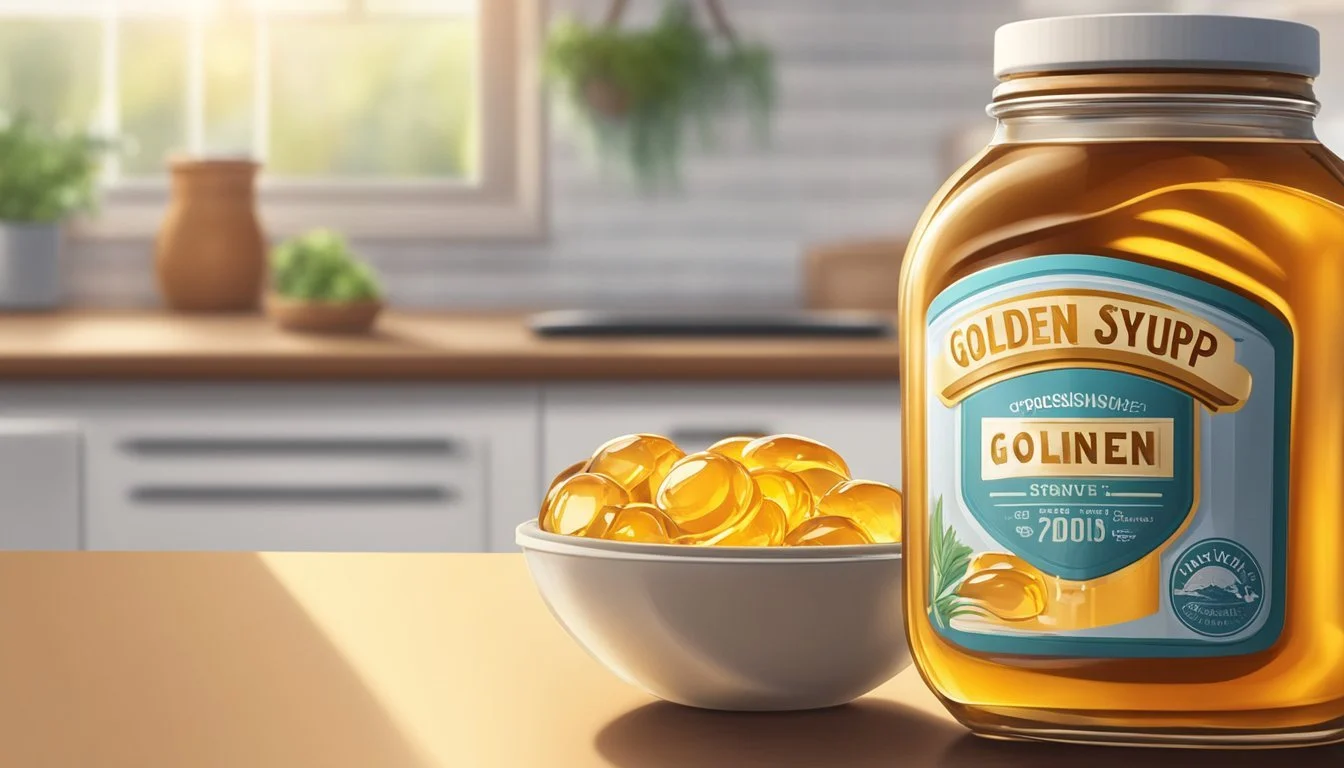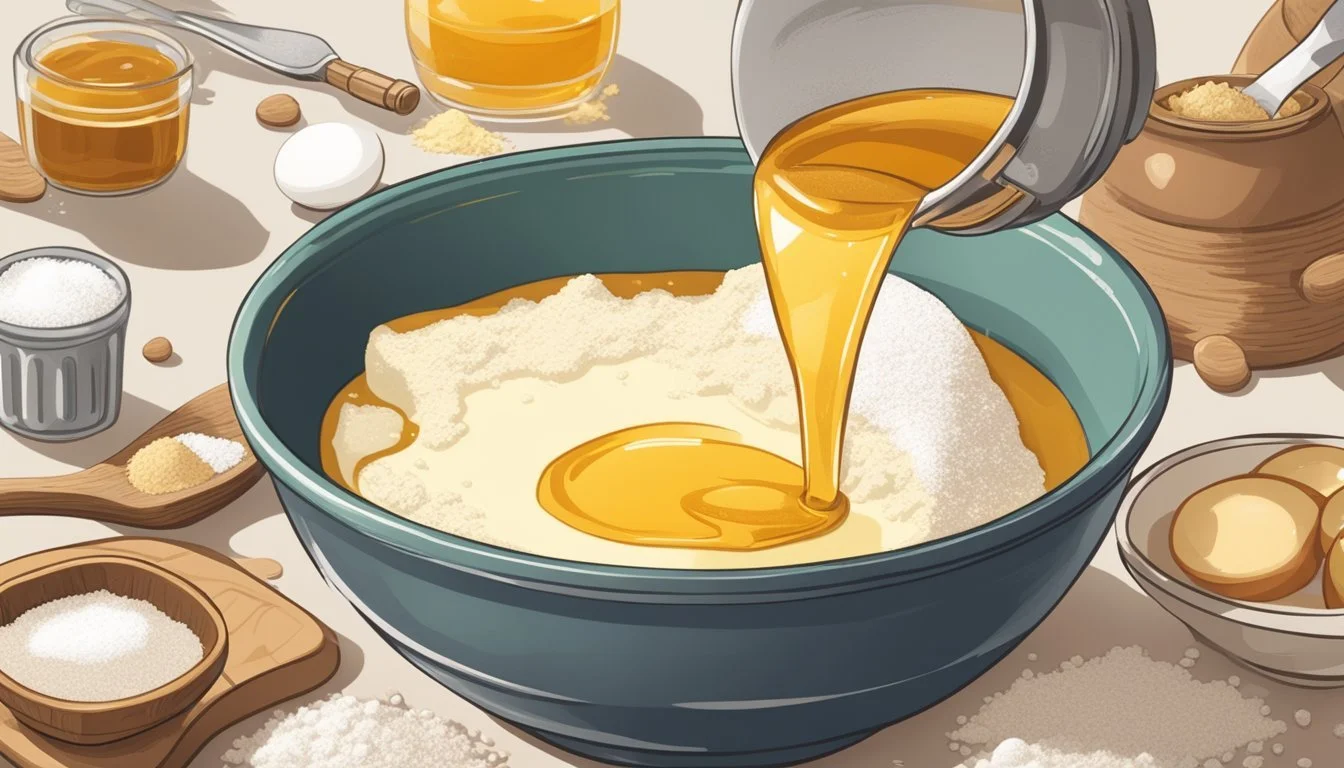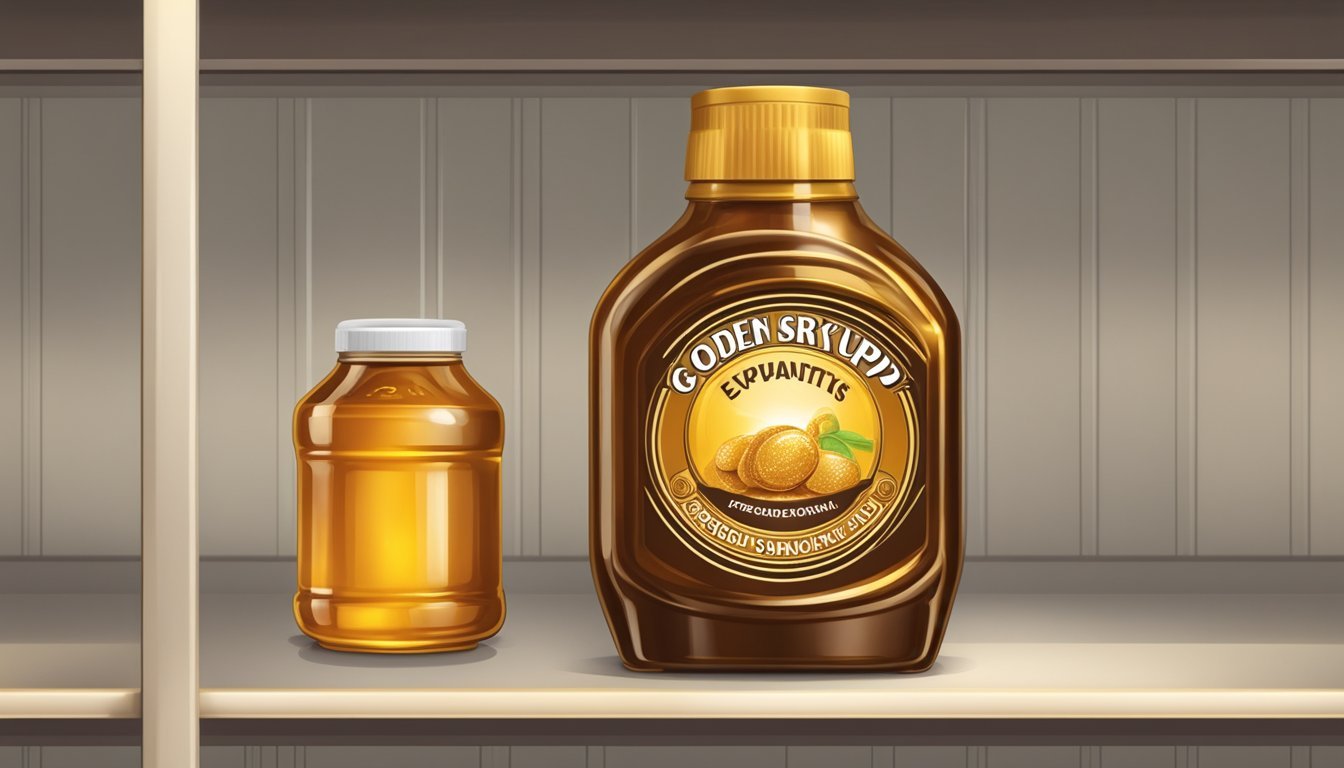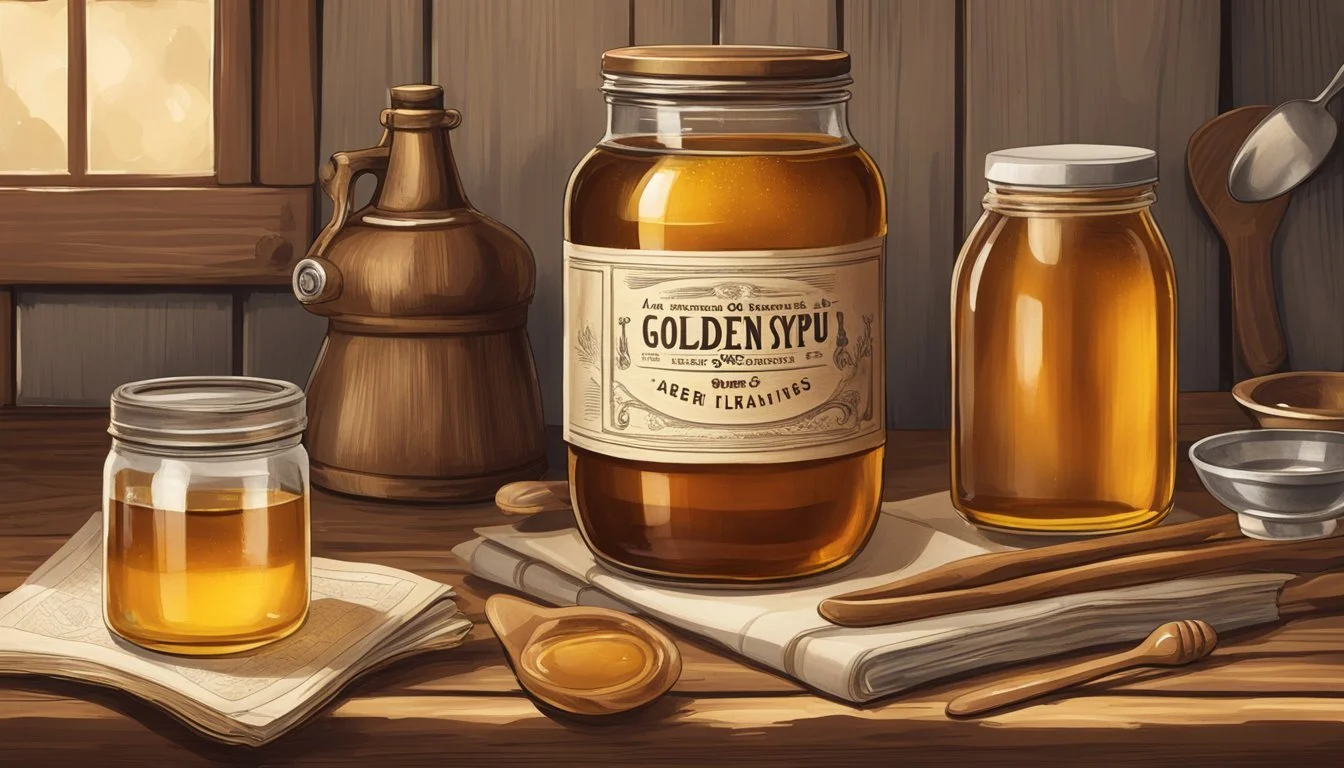How Long Does Golden Syrup Last?
Shelf Life and Storage Tips
Golden syrup (how long does golden syrup last?), treasured for its rich caramel flavor and thick, sticky consistency, is a staple in kitchens where sweetening and adding depth to recipes is essential. Derived from the process of refining sugar cane or beet, this amber-toned syrup boasts not just versatility in culinary use but also an impressive shelf life. Unlike many food products that require careful handling and quick consumption to avoid spoilage, golden syrup maintains its quality over an extended period, making it a reliable ingredient for both professional chefs and home bakers.
The longevity of golden syrup can be attributed to its high sugar content, which acts as a natural preservative, inhibiting the growth of microorganisms that typically cause food to deteriorate. When stored properly in a cool, dry place and in a well-sealed container to prevent contamination and moisture ingress, golden syrup can remain in good condition for several years. However, once opened, it is generally recommended to use it within a few months to enjoy its best quality, despite its ability to remain safe for consumption well beyond this timeframe.
Properties of Golden Syrup
Golden syrup is a distinct sweetener known for its unique properties, notably its appearance and flavor characteristics which set it apart from other syrups.
Color and Texture
Golden syrup is aptly named for its golden-amber coloration which bears a resemblance to honey. Its texture is best described as viscous and smooth, akin to a slightly thinner version of molasses. When stored properly, it maintains this consistency without crystallization.
Flavor Profile
The flavor of golden syrup is rich and buttery, with a sweetness that is deep and caramelly. Its taste is often described as more complex than standard sugar syrups, providing not just sweetness but also a flavor enhancement to recipes. The consistency contributes to the rich mouthfeel, making it a preferred ingredient for adding both sweetness and smoothness to various culinary creations.
Golden Syrup in Culinary Uses
Golden syrup, a byproduct of refining sugar cane or beet, boasts a unique caramel flavor that elevates various culinary creations. This versatile ingredient integrates seamlessly into an array of recipes, providing both moisture and richness.
Applications in Baking
Golden syrup is frequently a key ingredient in baked goods due to its ability to retain moisture and enrich flavor. Specific baking uses include:
Cookies: Enhances chewiness, particularly in British favorites like brandy snaps and Anzac biscuits.
Gingerbread: Contributes to a moist texture and deep, sweet-spicy profile.
Treacle Tart: Serves as the primary sweet component, paired with breadcrumbs to create this classic British dessert.
In recipes, golden syrup can often substitute honey or corn syrup, offering a nuanced taste difference.
Alternative Sweetener Uses
Aside from baking applications, golden syrup can be used as an alternative sweetener:
Pancakes and Waffles: Drizzled atop as a substitute for traditional maple syrup.
Tea and Beverages: A spoonful can sweeten tea, replacing sugar with its rich depth of flavor.
Caramel: Acts as a base for homemade caramel, contributing a robust sweetness.
The syrup's ability to blend well with a variety of ingredients makes it a versatile sweetener in both hot and cold dishes.
International Recipes Featuring Golden Syrup
Golden syrup transcends international cuisine, appearing in numerous dishes:
British Flapjacks: Integral to the chewy oat bar's creation, not to be confused with American pancakes.
Australian Recipes: A cherished ingredient in Anzac biscuits and other traditional desserts.
Asian Dishes: Employed in select Asian recipes to add sweetness and a glossy finish to fruit-based dishes or glazes.
This ingredient's international appeal underscores its flexibility and widespread culinary applications.
Storage Guidelines
Effective storage of golden syrup ensures its longevity and maintains its quality. The following guidelines outline how to keep golden syrup in optimal conditions and explain the impact these conditions have on its shelf life.
Optimal Storage Conditions
Golden syrup should be stored in an airtight container to prevent contamination and crystallization. Store a golden syrup in a cool, dark place—such as a pantry or cupboard—away from direct sunlight and heat sources. The ideal storage temperature is below 25°C (77°F). It is not necessary to refrigerate golden syrup, but if one prefers, it can be kept in the refrigerator.
Container: Use a clean, airtight jar or bottle.
Temperature: Keep it below 25°C (77°F).
Environment: A cool, dark place like a pantry or a cupboard.
Impact of Storage on Shelf Life
The shelf life of golden syrup can extend beyond its best-before date when stored correctly. An unopened container can last for several years under optimal conditions, while an opened container of golden syrup can remain in good condition for up to two years, provided it is well-sealed and kept away from contaminants.
Sealed: A tightly sealed lid preserves freshness.
Contaminant-Free: Always use clean utensils to avoid introducing impurities.
Darkness: Exposure to light can degrade the quality over time.
Packaging and Containers
The longevity of golden syrup is significantly influenced by its packaging and the containers used for storage. These factors play a critical role not just in maintaining the quality of the syrup but also in extending its shelf life beyond the expiration or best before dates often indicated on the packaging.
Types of Containers
Golden syrup is typically packaged in two types of containers: glass jars and metal tins. Each type has its own advantages. Glass jars are inert, meaning they do not react with the syrup, and their transparency allows one to easily assess the condition of the syrup without opening the container. Metal tins, while not transparent, are robust and less prone to breaking, making them suitable for long-term storage and transportation.
Sealing and Airtightness
A container's ability to seal properly is paramount in preserving golden syrup's quality. An airtight seal prevents moisture and air from entering the container, which can lead to spoilage. Containers with screw-top lids or snap-on lids are designed to create an airtight environment. Ensuring the lid is sealed tightly after each use will greatly extend the syrup's shelf life, often allowing it to remain in good condition well beyond the "best before" date.
Understanding Shelf Life
When it comes to the durability of sweeteners like golden syrup, the shelf life varies based on several factors and the specific date labels used on packaging. This section will elucidate on the elements involved in determining shelf life and differentiate between expiration and best before dates for products such as golden syrup.
Factors Affecting Shelf Life
The longevity of golden syrup and similar sugary products is influenced by multiple factors. Here's a brief breakdown:
Storage Conditions: Golden syrup should be stored in a cool, dry place away from direct sunlight. Exposure to heat and moisture can reduce its shelf life.
Packaging: Properly sealed containers prevent the ingress of air and contaminants that could degrade the syrup.
Preservatives: While golden syrup naturally resists spoilage due to high sugar content, some products may include additional preservatives to extend shelf life.
Expiration vs. Best Before Dates
Understanding date labeling is crucial for appropriate storage and usage:
Expiration Date: This label indicates the last day the product is considered safe to consume. Golden syrup, by nature of its sugar content, often does not have a typical expiration date.
Syrup Type Typical Expiration Honey Not applicable* Maple Syrup Up to 1 year Corn Syrup 6 months to 1 year
*Honey does not spoil if kept sealed and in the right conditions.
Best Before Date: This label suggests when the product will be at its peak quality. Golden syrup can be consumed after this date if it has been stored correctly and shows no signs of spoilage.
Sweetener Shelf Life Golden Syrup 2 years or more Light Treacle Similar to Golden Syrup
In both cases, consumers should visually inspect the product for signs of spoilage, such as mold or changes in texture or smell, regardless of the date indicated.
Safety and Spoilage
When it comes to golden syrup, safety and spoilage are primarily influenced by proper storage and the ability to identify signs of spoilage. It's important to understand how to maintain the quality of golden syrup to avoid contamination and potential food safety issues.
Identifying Spoilage
One must be vigilant in recognizing signs of spoilage in golden syrup. Although it has a long shelf life, certain indicators can signal that the syrup should not be consumed:
Smell: A deviation from its characteristic sweet scent could indicate spoilage.
Mold Growth: Any visible mold, especially black spots around the edges, is a sign of contamination and the syrup should be discarded.
Color Change: If the syrup darkens substantially, this might suggest spoilage.
It's worth noting that golden syrup may crystallize over time. This is a natural process and does not imply that the syrup is spoiled. Crystallized syrup can often be returned to its liquid state with gentle warming.
Preventing Contamination
Maintaining the quality of golden syrup is essential for prolonging its shelf life and preventing spoilage:
Storage: Keep the syrup in a cool, dark place, tightly sealed to prevent exposure to contaminants.
Utensils: Always use clean utensils when handling the syrup to avoid introducing bacteria.
Jar Selection: If transferring to a different container, ensure it is clean, dry, and has a tight-fitting lid.
By adhering to these practices, the risk of spoilage from harmful bacteria or mold is significantly reduced, and the golden syrup can remain safe to use for an extended period.
Homemade and Artisan Varieties
Golden syrup, commonly used in a variety of baking and cooking recipes, can be crafted at home or found in artisan-crafted varieties. Each type has its distinctive characteristics influenced by the ingredients and methods used in production.
Making Golden Syrup at Home
One can make golden syrup using three key ingredients: sugar, water, and an acid, typically lemon juice, to invert the sugar during the cooking process. The homemade golden syrup recipe involves simmering these ingredients, allowing the mixture to caramelize into a rich, amber-colored syrup. A basic recipe might include:
Ingredients:
200g sugar
150ml water
1 tablespoon lemon juice
Instructions:
Dissolve sugar in boiling water.
Add lemon juice.
Simmer until the mixture achieves the desired color and viscosity.
It's important to note that homemade golden syrup can differ in flavor and consistency based on the length of cooking time and the ratio of ingredients. The presence of lemon juice not only assists in the inversion of sugar but also contributes a subtle citrus note to the syrup.
Unique Artisan Varieties
Artisan producers often create golden syrup variants that can feature diverse flavors and textures. They might source sugars from different regions or utilize unique production techniques. For example, the renowned company Tate & Lyle, co-founded by Abram Lyle, produces a commercially famous golden syrup that has a distinct taste.
When scrutinizing artisan varieties, one might find options like:
Organic Golden Syrup: Sourced from organic sugar cane, offering a pure flavor profile.
Infused Varieties: Syrups with added ingredients like vanilla or spices for a unique twist on the traditional taste.
These artisan products often pride themselves on their history and quality, carrying forward a tradition that dates back to the original invention of golden syrup by Abram Lyle in the late 19th century. Whether for sweetening desserts, glazing meats, or as a topping, the various homemade and artisan varieties of golden syrup provide diverse options to both amateur and professional cooks.
Historical and Cultural Significance
Golden syrup holds a venerable position within the British cultural landscape not only as a culinary staple but also as a symbol of the United Kingdom's industrial and domestic history.
Golden Syrup in British Culture
Golden syrup, introduced by Tate & Lyle in 1885, rapidly became an essential sweetener in the United Kingdom. It transcends mere culinary usage and is interwoven with British customs and family life. Often found in classic British dishes such as treacle tart and flapjacks, golden syrup is as much a fixture of the British kitchen as it is a symbol of nostalgia for generations that have grown up with its distinct flavor. The product's iconic tin, adorned with the image of a lion and bees, signifies purity and strength and has remained largely unchanged, reinforcing its status as a heritage brand.
Evolution of Golden Syrup Production
The golden syrup's journey began with Abram Lyle, a sugar refinery owner who, in 1863, established a refinery at Plaistow Wharf, East London. Here, the process of refining sugar cane by-product into the thick, amber syrup started. Over time, production methods have evolved yet the manufacturer has maintained the quality and characteristics of the syrup, which has perpetuated its popularity. Despite the advent of modern manufacturing, golden syrup's production remains faithful to the traditional approach that confers its unique taste. As a vegan alternative to honey, it also appeals to a diverse demographic, further ingraining it into the fabric of society as a versatile sweetener.

